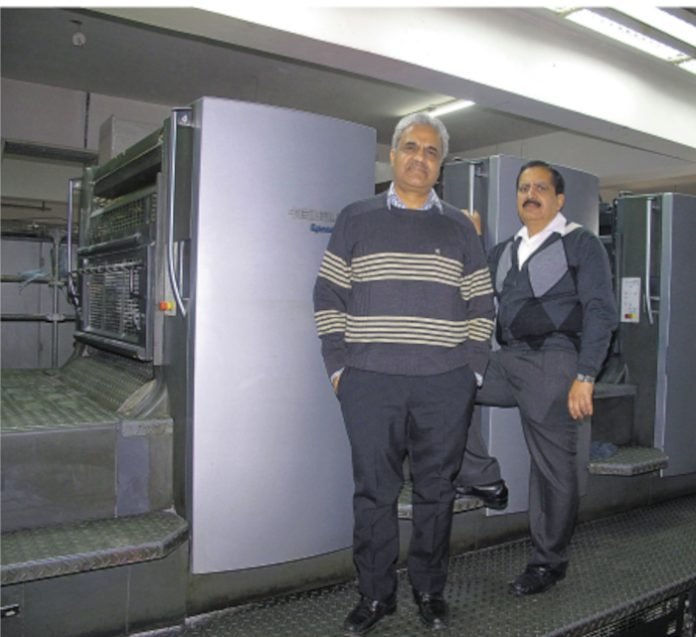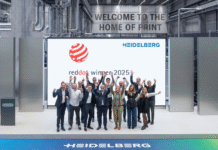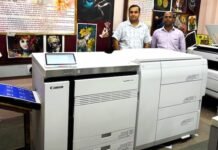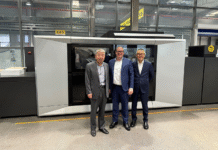
The commercial printing industry has seen new players entering the market in a hurry and established players trying to cope with this sudden surge in competition.
With its new plant in the rapidly developing industrial area of Kundli on the outskirts of Delhi, Paras Offset has seen a lot of action in the commercial printing space since its inception in 1969 – enough to give it a healthy edge over its competitors.
A lustrous past
Dharamvir Jain, director at Paras Offset says that the printing press started in Sadar Bazar in Delhi and moved to GT Karnal Road in 1981 where it installed a new Dominant single colour offset press followed by a new Dominant double colour in 1982.
In 1986 and 1987, the company added two 4-colour Solna presses. The first 4- colour KBA Planeta P44 with VCVD was installed in 1991 and in 1994 another 4-colour Planeta was added.
“Due to increasing demand in the market, we had to increase our scale of operations and in 1997 we opened another unit in Naraina where yet another Planeta P44 was installed in 1998,” says Jain With the Naraina unit also contributing to the company’s volumes, it prudently set up its own prepress with a new Scitex Dolev 800V imagesetter and a drum scanner from Screen.
In 2002, all the activities were shifted to Naraina where another plant had already been rented and equipped with comprehensive postpress and binding equipment.
In 2007, a brand new 4-colour Heidelberg CD104, a Kodak CtP and new cutting machines were added to the existing set of equipments.
Meeting increased demand
In 2010, the company found it prudent to shift its entire prepress, press and postpress activities to the rapidly developing industrial area of Kundli where it has a total area of around 80,000 square feet.
Visiting the plant premises of Paras Offset was an enriching experience, as one gets to witness a product being developed from scratch and finally being made ready to be delivered to the customer.
The corporate office of the company remains in Naraina. The primary activity of the company is printing of books, calenders, catalogs and brochures. Paras Offset exports its range of calenders and books to the US and UK and while last year saw a marginal decline in exports due to price pressure, Jain is hopeful that this year, sales will grow.
Currently, the company has a Kodak CtP with an online processor as well as two Epson printers for proofing.
There are two 4-colour machines, the Heidelberg CD102 and a KBA, a 6-colour Heidelberg and several other single and double colour presses. Paras Offset’s postpress department has a 2004 model Stahl folder along with other folders from Stahl and Shoei Star.
There is an Aster sewing machine, a Muller Martini saddle stitcher, a six-clamp Wohlenberg perfect binder and several laminators, 3-knife trimmer for soft and hardcover book production. Paras shrink wraps printed materials before shipping in cartons.
Industry concerns
Jain says that the commercial printing market is currently stagnant if not actually facing negative growth. “Earlier, there were bulk runs for books and brochures, but most of the commercial printers have reduced their print runs.
Many customers are preferring digital printing for short run requirements, hence offset printers are also buying digital presses where short run and customized end products can be provided to the end user,” he says.
The number of book titles has increased in the last three years, but run lengths have gone down. Moreover the cost of inputs like paper has increased by around 25 to 30% and other raw materials like ink have also seen a rise of around 15% in prices.
Out of the total cost incurred, a commercial printer ends up paying around 60 to 65% for paper only. The rise in input prices coupled with increased competition and production capacity, has resulted in substantially lower margins for offset printers.
Converting inclination
However, Paras does not plan to buy a digital press yet as the short run market has still not totally overwhelmed the print market in the Delhi-NCR region.
Jain feels that with rapid technology changes a digital press must bring in its ROI within four or five years. Even in smaller towns and cities offset printers have cropped up, thus creating entry barriers for printers from other cities.
Jain is eyeing the packaging segment where he feels there is 20 to 25% growth. “Segments like food, pharma and FMCG are all witnessing increased demand for packaging and we expect to do well in this field,” says Jain.
He feels that the company’s current printing equipment can support a beginning in monocarton production.
“Change is currently the need of the hour and if we want to survive in the market, we will have to look for avenues outside commercial printing at least till commercial printing regains its lost charm.

















